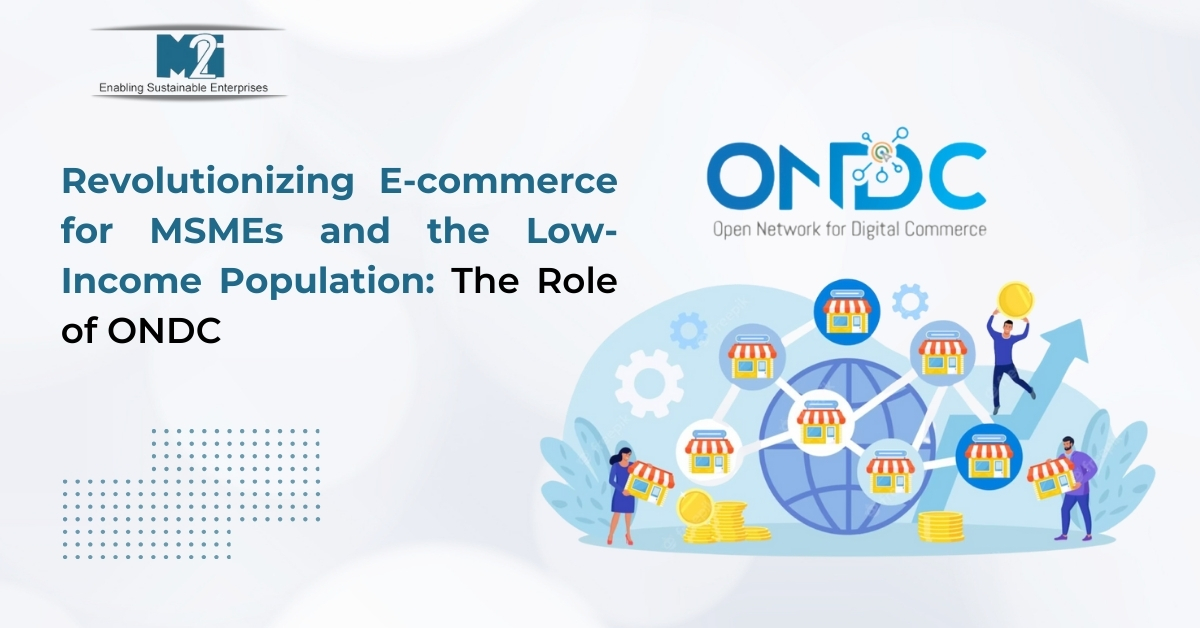
Revolutionizing E-commerce for MSMEs and the Low-Income Population: The Role of ONDC
In a rapidly evolving digital landscape, the Indian government has launched an ambitious initiative known as the Open Network for Digital Commerce (ONDC). This platform aims to transform the e-commerce ecosystem by promoting inclusivity and removing monopolistic barriers, thereby benefiting not only micro, small, and medium enterprises (MSMEs) but also the low-income population.
Background and Evolution of ONDC: The genesis of ONDC can be traced back to the government's vision to democratize digital commerce much like the Unified Payments Interface (UPI) did for digital payments. Recognized for its potential to level the playing field, ONDC was established as a non-profit company to develop an open network for digital commerce operations in India. Its inception was driven by the need to curb the dominance of large e-commerce giants which often marginalized smaller players and restricted consumer choices.
How ONDC Benefits MSMEs: For MSMEs, which form the backbone of India’s economy, the introduction of ONDC could be a game changer. Traditionally, these businesses have struggled with visibility and market access, finding themselves overshadowed by bigger e-commerce platforms that favor established brands. ONDC promises to dismantle these barriers by offering a unified platform where any vendor, regardless of size, can list their products and services without the need for heavy investment in technology or marketing.
The interoperability of ONDC allows MSMEs to reach a wider audience without being confined to one platform's ecosystem. This open network ensures that small businesses can compete on equal terms, offering their goods and services directly to consumers across multiple platforms. It significantly reduces the customer acquisition costs and allows MSMEs to operate on thin margins which are crucial for their survival and growth.
Empowering the Low-Income Population: ONDC also stands to benefit the low-income population by bringing more affordable products and services within their reach. The platform's design to enable price comparisons across different vendors encourages competition, which can lead to lower prices. Furthermore, by integrating local sellers into the digital economy, ONDC helps in keeping the money within local communities, supporting regional economic growth.
The ease of access to a broader market provided by ONDC means that consumers from lower-income brackets can enjoy the benefits of e-commerce, such as the ability to purchase goods at lower prices, which were previously inaccessible due to geographical and economic barriers.
The Broader Impact of ONDC: The ripple effects of ONDC are expected to extend beyond just commercial transactions. By fostering an environment where small and medium-sized enterprises thrive, ONDC contributes to job creation and sustains local economies. It also promotes innovation as businesses are pushed to improve their offerings to meet the demands of a competitive marketplace.
Conclusion: ONDC represents a transformative approach to e-commerce in India. By providing a platform that is accessible and equitable, it not only supports the growth of MSMEs but also ensures that the benefits of digital commerce can be enjoyed by all sections of society, particularly the low-income population. As the network rolls out, its success will depend on the continuous collaboration between the government, technology providers, and the business community to maintain an ecosystem that is transparent, efficient, and, most importantly, inclusive.